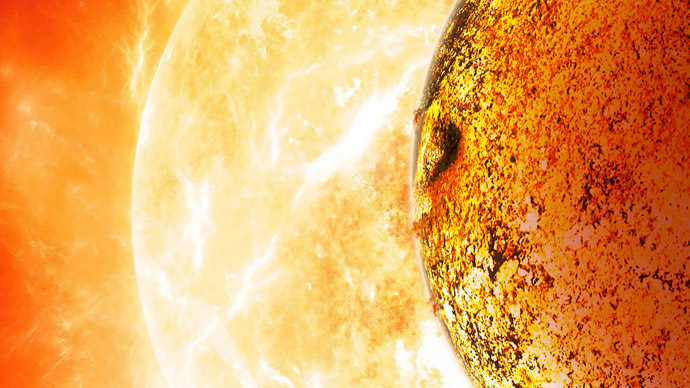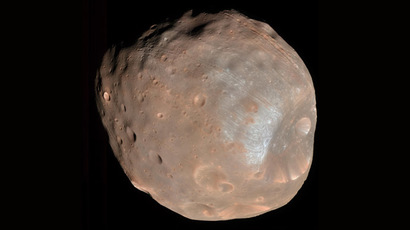Astronomers discover infernal earth-like planet that ‘shouldn’t be’

The space scientists are baffled after finding the first ever Earth-sized planet, which has the same density as our home world, and violates all known planetary formation theories by its existence.
The discovery of Kepler-78b was made by two separate groups of
astronomers in the US and Switzerland, who were analyzing data
from NASA’s Kepler Space Telescope.
The new planet orbits a sun-like Kepler-78 star in the Cygnus or
Swan constellation some 400 light years away from Earth.
The scientists say that Kepler-78b is unique as it’s the first
known Earth-sized planet, which has a density similar to Earth.
Despite being twice as heavy, it’s just 20 per cent larger than
Earth and is believed to be composed of the same rock and iron as
our home world.
But this is where the similarities end as the astronomers
stressed that life is impossible on Kepler-78b, which Andrew W.
Howard from the University of Hawaii described “as one of the
most hellish” places ever discovered.
The planet is a lava world where the surface temperatures exceed
1000 Celcius, “well above the temperature where rock
melts,” Howard told the New York Times.
Such extreme conditions are caused by Kepler-78b’s super tight
orbit, which overturns the existing knowledge on planetary
formation.
The planet circles around its star in just eight and a half hours
at a distance of less than a million miles (around 1.6 million
kilometers). By contrast, Earth is 93 million miles (around 150
million kilometers) away from the sun, completing a full circle
around it in 365 days.
According to current theories, Kepler-78b couldn't have formed so
close to its star as its orbit would’ve been inside the sun when
the system was taking shape.
“It couldn't have formed in place because you can't form a
planet inside a star. It couldn't have formed further out and
migrated inward, because it would have migrated all the way into
the star. This planet is an enigma,” Dimitar Sasselov, a
member of Dr. Pepe’s team, told the Harvard-Smithsonian Center
for Astrophysics (CfA) website.
Another CfA astronomer, David Latham, acknowledged that modern
science doesn’t “know how it formed or how it got to where it
is today,” calling Kepler-78b “a complete mystery.”
However, Latham stressed that the newly discovered planet
“isn’t going to last forever.”
In three billion years, the gravitational tides will draw
Kepler-78b close to the sun and it’ll eventually be ripped part.
Kepler-78b is one of more than 150 planets, which NASA’s Kepler
Space Telescope spotted by registering dimming of the starlight
when a planet passes in front of it.
The spacecraft was launched in 2009, but went out of order this
May, with the US Space Agency saying that it won’t be making
attempts to resume its operations.
But the amount of data on exoplanets (planets outside the Solar
system), which Kepler managed to collect, will take several years
for the astronomers to analyze.














